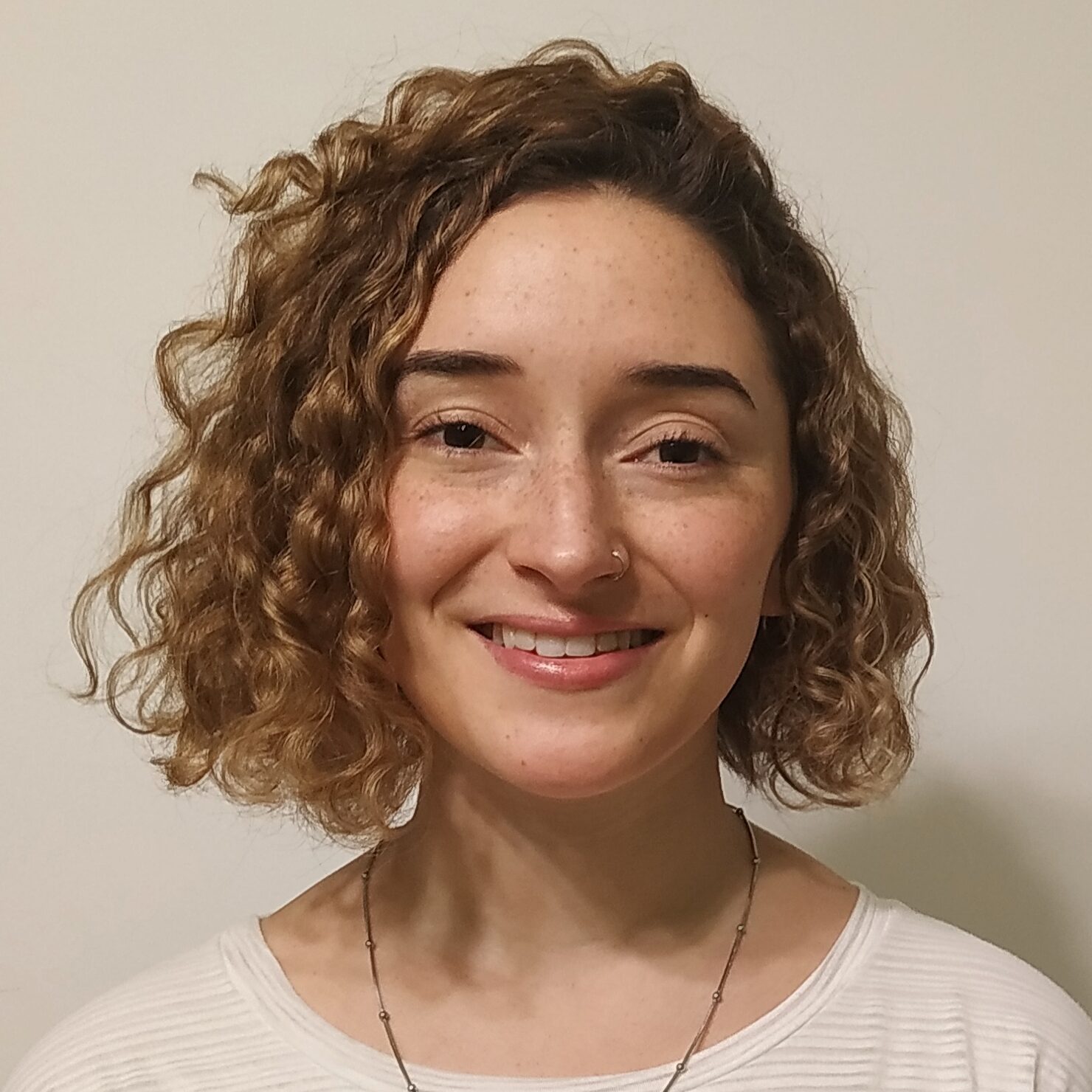
Oral Communications
09:00 · 11:00
María Angélica Benítez
Laboratorio Interdisciplinario de Neurociencia Cognitiva (LINC), Centro de Estudios Multidisciplinario en Sistemas Complejos y Ciencias del Cerebro (CEMSC3), Instituto de Ciencias Físicas (ICIFI), Escuela de Ciencia y Tecnología (ECyT), Universidad de San Martín (UNSAM), Consejo Nacional de Investigaciones Científicas y Técnicas (CONICET)
Memory and musical training in adolescents
The relationship between musical experience as well as general cognitive development throughout life has been widely studied. Studies have found that musicians achieved higher scores in memory tasks than non-musicians, but this was not investigated in the performance of emotional memory in adolescents’ musicians and non-musicians. The goal of this study was to evaluate the relationship between musical experience, emotional and neutral memory in a sample of Argentinian adolescents. The performance of 30 adolescents between 12 and 15 years old, trained in Argentinian Conservatories of Music was compared to adolescents without this type of training in an emotional and neutral memory task (based on the International Affective Pictures System). They were evaluated on their free recall and recognition of the images, both immediately and deferred. The evaluations were carried out remotely due to publicly known sanitary restrictions. The results showed that the emotional material was more remembered than the neutral one. Immediately, no significant differences were found between the groups, however, it was found that the musicians remembered a greater number of images than the adolescents without musical training in the deferred measures (both neutral and emotional). Lastly, no significant differences were found in the recognition tasks. The results, of social, clinical, and educational implication, show that musical training modulates the emotional and neutral memory of adolescents.

Martina Boscolo
Laboratorio de Neurociencia, Universidad Torcuato Di Tella
Can video games enhance children and adolescents' cognitive capabilities? A systematic review of the transfer of video game training to cognitive and psychosocial abilities

Julio Roberto Castillo Elias
Laboratorio de Neurogénesis Adulta, Departamento de Fisica Médica, CNEA
A population dynamics model about how learning promotes adult neurogenesis in delimited regions of the zebrafish pallium.
Neural stem cells (NSCs) in the zebrafish pallium undergo through both symmetric and asymmetric divisions in order to generate new-born neurons and to perpetuate the NSC reservoir pool. A few studies address how the activity of neural circuits regulates the adult neurogenesis homeostasis, while the role of cognitive activity on new-born neuronal addition has not been explored yet. Here we aimed to test whether cognitive activity enhances adult neurogenesis by training zebrafish in a spatial relational task. We found that learning increases a ~3 fold NSC proliferation in the rostral-dorsomedial (rDm) pallium, when compared to mocked controls. Next we evaluated the role of learning on neuronal addition in the pallium. To do this, a cohort of proliferating NSCs were labeled by BrdU administration, and then fish were trained during 2 or 3 consecutive weeks. We found that training increases the number of newborn neurons in rDm proportional to the extent of cognitive activity. To understand the cellular mechanisms behind these results, we developed a population dynamic model of proliferating NSCs (based on Than-Trong el al 2020), where NSC proliferation and death are sensitive to cognitive activity. Our model suggests that learning in a spatial relational task promotes neurogenesis in rDm in two ways: firstly, by promoting newborn neurons’ rescue from apoptosis due to network activity, and secondly, by acting as a catalyst for a successive labeled-NSCs proliferation.

Nicolás Comay
Cognitive Science Group - Instituto de Investigaciones Psicológicas (IIPsi - CONICET - UNC)
Implausible alternatives paradoxically increase confidence in a perceptual decision
Computational models of confidence in perceptual decisions predict that the presence of implausible alternatives in a decision making task should not affect reported confidence. However, research in non-perceptual tasks showed that implausible alternatives increase confidence, a counterintuitive finding that defies current understanding of confidence processes. Here we experimentally test whether this phenomenon also plays a role in perceptual decision making. We conducted 3 online experiments. In experiment 1 and 2 participants had to decide which of a set of stimuli was the biggest, and report their confidence level. In Exp1 half of the trials included very small, clearly incorrect stimuli, whereas in Exp2 one to three small alternatives were added. We found that the addition of implausible alternatives increased confidence. Moreover, confidence increased monotonically with the number of weak alternatives. In experiment 3 we aimed to replicate our findings in a different task; here confidence only increased minimally in correct trials. These results are hardly compatible with current computational models of confidence. Therefore, we proposed one alternative model that accounts for our data. Our work contributes to a thorough understanding of the cognitive processes underlying our sense of confidence, and proposes venues for future research.

Alvaro Concha Alvarez Prado
Neurobiology of Movement Lab, Medical Physics Dept, Instituto Balseiro, UNCUYO-CNEA
What can non-linear embeddings tell us about the way a mouse learns a motor skill?

Ana Belén de Landeta
1 Laboratorio de Memoria, Instituto de Biología Celular y Neurociencia “Prof. E. De Robertis” (IBCN), CONICET-Universidad de Buenos Aires, Buenos Aires, Argentina 2 Facultad de Medicina, Universidad de Buenos Aires, Buenos Aires, Argentina
Assessing the object recognition memory dynamic network upon retrosplenial cortex inactivation- a functional neuroimaging study in rats
Little is known about the object recognition memory (ORM) network. We recently found that the retrosplenial cortex (RSC) is required for ORM consolidation and retrieval; yet RSC inactivation during acquisition prevents its requirement for these memory stages, suggesting that ORM network changes. To assess this we used cerebral blood flow (CBF) SPECT for imaging rats brain activity patterns during habituation (H), training (TR), test (TS, 24h) and re-test (reTS, 7d after TR) in 2 groups; rats infused with saline (control, Ctl) or muscimol (Musc, GABA A agonist, 0.1 µg/side) into the RSC 15min before TR. Within group comparison showed that CBF during TR compared to H decreased over the midline cortical regions from prefrontal cortex to the RSC. Also, CBF increased during TR in the lateral hypothalamus and superior colliculus. During TS compared to TR, CBF increased in the piriform and lateral entorhinal cortex. When compared reTS to TS, CBF decreased in the anterior cingulate cortex and the ventral thalamic nuclei. The deactivation of RSC during TR was stronger in the Musc group, but the largest differences between groups were found during TS. In this condition, CBF in the orbitofrontal cortex and dorsal hippocampus decreased in the Musc group, while CBF in the RSC was higher in this group. We uncovered complex brain-wide activation patterns in the different stages of ORM and showed that RSC inactivation during memory acquisition changed the memory network during retrieval.

Rodrigo Manuel García-Virgolini
Facultad de Psicología; Universidad Nacional de Córdoba
Effects of elevated episodic alcohol consumption during adolescence on recognition memory
Adolescent alcohol consumption is an important health issue in Argentina. Many studies indicate that age of first intoxication is more relevant than age of first contact in explaining alcohol related disorders. This suggests that preclinical studies should focus on models that generate high amounts of consumption in a short time. The present study assessed in male and female Wistar rats the effects of chronic exposure to alcohol during adolescence on recognition memory, with a model simulating elevated episodic alcohol consumption (EEAC). The hypothesis was that exposure to EEAC would result in significant deficits in recognition memory. 48 rats were submitted to a protocol of daily intermittent 2 hour sessions of alcohol auto-administration (EtOH 10%) during adolescence from postnatal days 30-50. Control group received water. Between postnatal days 60-67 rats were evaluated with novel object recognition test. Rats exposed to alcohol during adolescence exhibited significantly less distance traveled in experimental arena [F(1,44)=4.82; p=0.03]. However, no alcohol induced deficits were observed on novel object discrimination. Furthermore, rats that had undergone EEAC showed slight but significant increase in novelty discrimination compared to controls [F(1,44)=4.21; p=0.04]. The hypothesis that EEAC would impair recognition memory was not confirmed. Nonetheless, less distance traveled by animals exposed to EEAC suggests the procedure may have altered motivational patterns.

Candela Sofia Leon
Laboratorio de Sueño y Memoria/Instituto Tecnológico de Buenos Aires
Impairment of aversive episodic memories during Covid-19 pandemic: The impact of emotional context on memory processes
Episodic memory is the ability to recall about what, where and when the event happened. Furthermore, there is a consensus that pleasant or aversive events are better remembered than neutral events and that episodic memory processes are modulated by anxiety and depression. People’s mental health has deteriorated due to the COVID-19 pandemic, showing a growth in anxiety and depressive symptoms. Here, we hypothesize that the increase in negative symptoms modifies the ability to encode and consolidate memories. To study this, we evaluated the effects of emotional context on encoding and consolidation of aversive and neutral episodic memories.

Fernando Gabriel Luna
Instituto de Investigaciones Psicológicas (IIPsi, CONICET-UNC), Facultad de Psicología, Universidad Nacional de Córdoba, Argentina
Dissociated neural mechanisms for executive and arousal vigilance
Vigilance is the challenging ability to sustain attention during long periods. Recently, it has been proposed that vigilance is better understood as two dissociated components: (a) executive vigilance, a cognitive component implied in detecting infrequent critical signals; and (b) arousal vigilance, a rather automatic component involved in sustaining fast responses to stimuli from environment. The present study aimed at dissociating the neural mechanisms of the executive and arousal vigilance components. 37 participants (age: M = 25.86; SD = 4.99) completed two experimental sessions, in which the ANTI-Vea task (i.e., a continuous behavioral task of ~38 min suitable for simultaneously measuring vigilance components) was performed while EEG signal was recorded. Dissociated neural responses were observed for vigilance components. For executive vigilance, correct detections were anticipated by a decline in alpha power prior to the infrequent critical signal appearance. Instead, for arousal vigilance, fastest responses were anticipated by a reduced delta power prior to stimuli appearance. Moreover, while the executive vigilance decrement was observed as a change on late event-related potentials (i.e., P3 and slow positivity), the slowness on arousal vigilance responses was found as a change in P2, a rather earlier event-related potential. Altogether, this study presents a novel dissociation of the neural mechanisms associated with vigilance components.

Malen Daiana Moyano
Laboratorio Sueño y Memoria, Dpto Ciencias de la Vida, ITBA
Non-Linear susceptibility to interferences in declarative memory information

Ana Paula Toselli
Cátedra de Fisiología Animal - Facultad de Ciencias Exactas, Físicas y Naturales - UNC
Gestational environmental enrichment affects offspring behavior of adolescent rats in a sex specific manner: A preliminary investigation
The maternal environment is important for embryonic brain development. We investigated whether environmental enrichment during the gestation period influences offspring behaviors in juvenile male and female rats. Pregnant rats (from gestation day 1 to 20) were housed in an enriched environment (EE) consisting of large cages for exploration, stimulating toys, running wheels and eight companions for social interaction. A control group was housed in standard cages (two per cage). After birth, litters from both groups were maintained in a standard environment until 45 postnatal day. The effects of maternal enrichment on the behavior of male and female offspring were determined by elevated plus maze (EPM), open-field (OF) and social preference test (SPT). The results showed that in EPM, female offspring of EE mothers spent more percentage of time in open arms indicating a decrease in anxiety-like behavior. In OF, male and female EE rats showed more locomotor activity and spent more time in the aversive inner zone of the maze than control rats, indicating lower emotional reactivity behavior. When examining social behavior, there is a preference for investigating the social stimulus over the object stimulus in all groups. However, EE males exhibit less time spent investigating the social stimulus compared to control males. The evidence demonstrates that maternal exposure to EE affects the behavioral trajectories of offspring in a sex-specific manner.

Camila Coll
Instituto de Fisiología y Biofísica Bernardo Houssay (IFIBIO)
Can Tourette syndrome phenotypes be induced by acutely inhibiting Nkx2.1 derived striatal interneurons?

Celina Goyeneche
Laboratorio de Memoria, Instituto de Biología Celular y Neurociencia “Prof. E. De Robertis” (IBCN), Facultad de Medicina, UBA-CONICET
Second wave of Covid 19 pandemic in Argentinian population: vaccination results in a decrease in depressive symptoms.

Gabriela Verónica Nieva
IFIBIO Houssay, Grupo de Neurociencia de Sistemas, Facultad de Medicina, Universidad de Buenos Aires - CONICET
Region-specific features of early microglial activation in a conditional mouse model of TDP-43 proteinopathies

Daniela Piña Novo
Grupo de neurociencia de sistemas, IFIBIO "Houssay"-UBA-CONICET
Altered beta bursts in the motor cortex after dopamine depletion and levodopa medication in a rodent model of Parkinson's disease
Carlos Alfredo Pretell Annan
Grupo de Neurociencia de Sistemas / Instituto de Fisiología y Biofísica Bernardo Houssay (IFIBIO-Houssay) / UBA-CONICET
Temporal assessment of behavioural alterations and sex influence in an NMDA receptor knockout model of schizophrenia.

Daniela Alejandra Cassano
Neurophysiology Laboratory / IMBICE / CONICET-UNLP-CIC
Growth hormone secretagogue receptor is required to enhance reward-related behaviors adaptations toward palatable stimuli in calorie-restricted mice

Joaquin Ezequiel Gonzalez
Laboratorio de Inteligencia Artificial Aplicada / Facultad de Ciencias Exactas y Naturales / Universidad de Buenos Aires
Low frequency brain representation of acoustic features during goal oriented dialogue
Alejandro Nasimbera
ENYS CONICET - UNAJ - HOSPITAL EL CRUCE
Diagnostic Performance of MRI Volumetry in Epilepsy Patients With Hippocampal Sclerosis Supported Through a Random Forest Automatic Classification Algorithm

Gustavo Ezequiel Perez
Medical Physics Department, Centro Atómico Bariloche, CNEA-CONICET, San Carlos de Bariloche, Argentina
Assesing the usefulness of an optogenetics setup to study the circadian clock of Drosophila melanogaster
Light-triggered neural activation, or optogenetics allows the manipulation of neural activity with millisecond precision. The simplest protocol is to express, light-gated ion channel in neurons of interest. We built an optogenetic setup to study neural circuits that control the circadian clocks in flies. As Drosophila, is supposed to be blind to red-shifted wavelengths, in this work we employed Chrimson, a red-shift ChR2 variant, to in vivo activate neurons without disturbing the circadian rhythms. By expressing Chrimson in fruitless neurons we were able to activate courtship movements in males, proving the functionality of this system in our hands. Next, we quantified neuronal activation at different wavelengths, intensities and stimulation times, employing the courtship behavior as a readout. We found that high light intensities were needed to evoke behavioral changes. Then, as DN1p neurons control sleep and circadian rhythms, we drove the expression of Chrimson onto these neurons. Surprisingly, we observed a clear increase in locomotor activity of control flies during light pulses, suggesting that these flies can see red light. This increase of activity is much less pronounced in flies expressing Chrimson, which suggests that the opening of the channels partially suppresses the activity increase. Thus, even though our results may support earlier findings, they also cast some doubts on the usefulness of Chrimson as an optogenetic tool to study the neural control of sleep.

Fermín Travi
Instituto de Investigación en Ciencias de la Computación (ICC) Pabellón I, Ciudad Universitaria, CABA
Benchmarking human visual search computational models in natural scenes: models comparison and reference datasets
Nowadays, several algorithms are able to predict gaze positions during simple observation, but few models attempt to simulate human behavior during visual search in natural scenes. Moreover, these models vary widely in their design and exhibit differences in the configuration of their datasets and metrics employed. Thus, there is a need for a reference point, on which each model can be tested, and from where potential improvements to the algorithms can be derived.
Three models were considered: a Bayesian model (cIBS), one based on a CNN (IVSN), and one based on reinforcement learning (IRL). Each of them had its own dataset and was evaluated on all of them. The analysis was centered on performance and similarity to humans.
Not surprisingly, each model performed best on its own dataset. However, cIBS displayed the greatest similarity to humans in all of them. IRL performs categorical visual search and, thus, generalized poorly to other datasets. IVSN was great at finding objects, but failed to capture human behavior. Interestingly, human observers didn’t display common distractions, such as looking at human faces, but cIBS did. Furthermore, humans are strongly guided by context, whereas the models ignore where objects are commonly located in a scene.
Incorporating the context of a scene seems to be crucial for capturing human behavior. The present work shows the urgency for common metrics and datasets for the development of more general visual search models in natural scenes.

Ivana Leda Bussi
1. Laboratorio de Genética del Comportamiento / Fundación Instituto Leloir - IIB-BA CONICET - 2. de la Iglesia Lab/ Department of Biology/ University of Washington
Deletion of the vesicular GABA transporter from NeuromedinS+ SCN neurons impairs behavioral circadian rhythms in mice.

Laura Alethia de la Fuente
COCUCO/DF-IFIBA/UBA
Temporal reversibility of neural dynamics as a signature of consciousness
- Virtual Personal Space
- Poster

Juan Ignacio Ispizua
Laboratorio de Genética del Comportamiento, IIBBA-FIL
The impact of glial signals on neuronal structural plasticity

Giovanna Margarita Velázquez Campos
Genética del comportamiento, Fundación Instituto Leloir
The role of orsai in circadian rhythms

María Ayelén Caramés
Laboratorio de la conciencia, IFIByNE, CONICET-UBA
FREQUENCY AND EMOTIONAL PRIMING COULD MODULATE COMPLEX DECISION-MAKING PROCESSES DEPENDING ON TASK RELEVANCE

Juliana Fatima Dalto
Laboratorio de la conciencia, IFIByNE, CONICET-UBA
Consolidated Aversive Memories are hard to forget

Graciela Ines Kearney
Redes neuronales, Instituto de Fisiología, Biología Molecular y Neurociencias (IFIBYNE)
Coordination of neural activity across segments
In animal motor behaviors, the segments along the antero-posterior axis perform movements in a coordinated manner. Leeches are an outstanding model to analyze the underlying neuronal network controlling this function because the 21 segments that compose the body are virtually identical, simplifying the question on intersegmental coordination to that on interactions among iterated units. Leeches crawl over solid surfaces through a succession of elongation and contraction body waves, anchored on the posterior and anterior suckers. Each segment bears all the neurons required to produce this rhythmic motor pattern and dopamine evokes fictive crawling in isolated midbody ganglia. The rhythmic motor pattern can be also elicited in chains of three ganglia in a coordinated way. The activity pattern in both experimental conditions is highly similar, and fits behavioral parameters. To analyze the degree of interaction of the local segments along the chain we manipulated the membrane potential of the premotor nonspiking neurons. A hyperpolarization of this neuron that in isolated ganglia annuls the crawling motor pattern, produces a minor slowdown in the chain. The results indicate that isolated short ganglion chains have all the elements necessary to produce coordinated activity, but the network cannot be considered as a series of interacting autonomous segmental units. Within the chain, the segmental networks are integrated in a global network that subdues the segmental units.

Nicolás Martorell
Laboratorio de Redes Neuronales / Instituto de Fisiología, Biología Molecular y Celular / UBA-CONICET
Audiovisual integration in the Mauthner cell enhances escape probability and reduces response latency
Fast and accurate threat detection is critically important for animal survival. Reducing perceptual ambiguity by integrating multiple sources of sensory information can enhance threat detection and reduce response latency. However, studies showing a direct link between behavioral correlates of multisensory integration and its underlying neural basis are rare. In fish, an explosive escape behavior known as C-start is driven by an identified neural circuit centered on the Mauthner cell. The Mauthner cell can trigger C-starts in response to visual and auditory stimuli allowing to investigate how multisensory integration in a single neuron affects behavioral outcome after threat detection. Here we demonstrate that in goldfish visual looms and brief auditory stimuli can be integrated to increase C-start probability and that this enhancement is inversely correlated to the saliency of the cues with weaker auditory cues producing a proportionally stronger multisensory effect. We also show that multisensory stimuli reduce response latency locked to the presentation of the auditory cue. Finally, we make a direct link between behavioral data and its underlying neural mechanism by reproducing empirical data with an integrate-and-fire computational model of the Mauthner cell.

Matias Mugnaini
Fundacion Instituto Leloir (IIBBA)
Remapping of CA3 ensembles induced by optogenetic stimulation of young but not mature adult-born granule cells in free-foraging mice

Martina Radice
Neuronal Networks Lab - IFIBYNE - CONICET/UBA
Neuronal Networks: Balancing Motor Outputs

Natalia Giannina Armando
1. Biomedicine Research Institute of Buenos Aires - CONICET - Partner Institute of the Max Planck Society, Buenos Aires, Argentina. 2. Instituto de Investigación en Biomedicina de Buenos Aires (IBioBA-MPSP-CONICET) 2 Universidad Nacional de Quilmes, Departamento de Ciencia y Tecnología. Buenos Aires, Argentina.
Signaling pathways mediated by CRHR2α in neuronal cell contexts

Juán Facundo Chrestia
Laboratorio de Neurofisiología y Farmacología Molecular/Instituto de Investigaciones Bioquímicas de Bahía Blanca/CONICET-Universidad Nacional del Sur
A Functional Interaction Between a Region of the SARS-CoV-2 Spike Protein and the Human α7 Nicotinic Receptor

Clara Inés McCarthy
Instituto Multidisciplinario de Biología Celular (IMBICE-CONICET-UNLP-CIC)
Effects of the antipsychotic drug chlorpromazine on D1/D5R constitutive activity and postsynaptic currents in prefrontal cortex (PFC) neurons

Antonella Soledad Rios
Molecular and Cellular Neuroscience Division-INSTITUTO DE INVESTIGACIONES BIOQUIMICAS DE BUENOS AIRES (IIBBA) ; (CONICET - FUNDACION INSTITUTO LELOIR).
Etv4 regulates peripheral innervation and the development of peptidergic sensory neurons mediating pain stimuli.

Maximiliano Rios
CIQUIBIC-FCQ-UNC
Arylalkylamine N-acetyltransferase: “Nuclear importation and protective role against the blue light”

Lucia Santadino
Laboratorio de Neuroepigenética, Departamento de Química Biológica, Facultad de Ciencias Exactas y Naturales, Universidad de Buenos Aires
Cocaine-base paste administration during adolescence alters the expression of genes involved in the excitatory/inhibitory balance in reward-system regions.

Juan Francisco Döppler
Laboratorio de Sistemas Dinámicos, Departamento de Física, FCEN, UBA; IFIBA-CONICET
Synthesizing avian dreams

Constanza Miguel
Instituto de Biología y Medicina Traslacional
Chemotherapy-induced changes in the expression of transient potential receptors in dorsal root ganglia and spinal cord of both male and female animals: implications for neuropathic pain generation.
